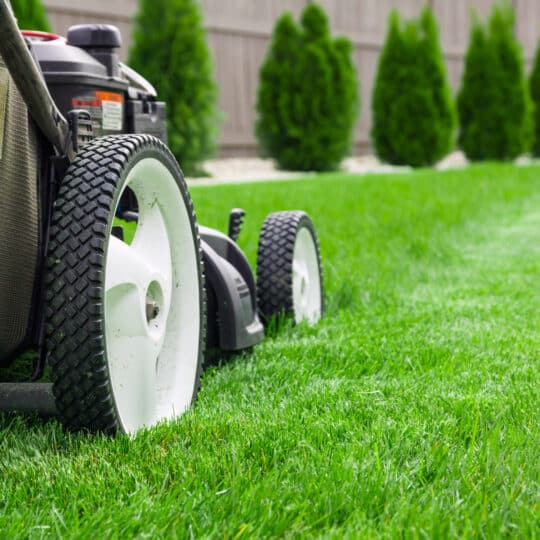8 Lawn Mowing Tips
Reduce Stress and Injury to Your Turf

Now that we’re well into the grass growing season, it’s time to power up the mower. Maintaining your lawn is not only important for curb appeal, but it also helps limit lawn pests and disease. However, how you mow is equally important to the health of your grass. Follow these lawn mowing tips to help reduce stress and injury to your turf.
What to Know Before You Mow
While cutting the grass may seem like a chore, it’s an important task in maintaining the health and vitality of your lawn. It also limits the possibility of having to deal with pests that like to hide in tall grass and disease that can grow in poorly maintained areas.
Not only is the task itself essential, but the process also needs to be carried out properly. Here are some tips to remember.
- Maintain your mower. If the first time you mow is the first time you’re breaking your mower out of the shed since last fall, stop for a moment. Check the underside of the mower and clean out any grass buildup. Replace any filters, plugs, or other parts as needed. Regular mower maintenance helps ensure that it operates efficiently and cuts grass cleanly.
- Sharpen the blade. If you do any maintenance on your mower, make sure it’s this. Not only does a dull blade do a poor job cutting your grass, but it can tear the blades, leading to a ragged appearance and making it more susceptible to disease.
Now Go Mow
Once your mower is primed and ready, it’s time to get cutting…or is it?
- Wait until the grass is dry. Mowing wet grass is unsafe for you and your yard. It’s a slipping hazard; creates a clumpy, uneven cut; and simply stresses the turf.
- Avoid extreme heat. This is also to benefit both you and your lawn. The stress it causes can lead to damage (for the grass) and exhaustion (for you). Try to mow early in the morning—after any dew dries—or early evening when temperatures are typically cooler.
Lawn Mowing Tips
With your mower primed, grass dry, and weather cool, it’s finally time. Just remember:
- Cut at the right height. Mowing height varies depending on the type of grass and time of year. If you’re unsure of the type of grass you have, contact a lawn care specialist for assistance. Adjust your mower gradually to cut to the recommended height. Remember, taller blades help to shade the soil and retain moisture. Cutting your grass too short can stress the turf and leave it vulnerable.
- Leave the clippings. Grass clippings act as a natural fertilizer for your lawn. Consider leaving them where they lay to decompose naturally and provide nutrients back to the soil. If you want to bag them, add them to a compost pile or use them in your garden beds as mulch.
- Alternate patterns. You may get caught in a routine pattern every time you mow. This can lead to soil compaction and flattened grass. Switch up directions to get the grass to stand up tall and reduce ruts in your lawn.
- Don’t mow if you don’t need to. Just as the patterns become routine, so can the schedule. You don’t have to mow just because it’s Saturday. Only mow when your grass needs it. Growth may fluctuate throughout the season, and remember what happens when grass gets too short (it gets stressed).
By following these lawn mowing tips, you can help reduce stress and injury to your turf while maintaining a healthy and vibrant lawn. If you do run into issues, and your grass shows discolored or patchy signs of stress, you can always call Green Image Lawn Care to help bring your lawn back to life.